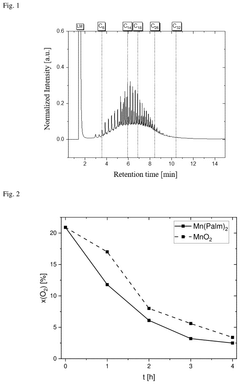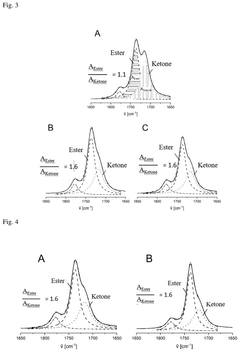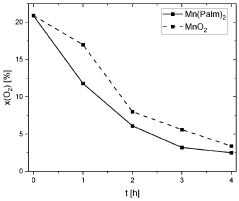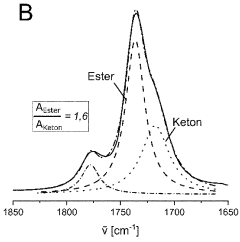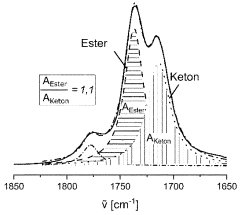How to Elevate HDPE to Meet Tomorrow's Environmental Standards?
HDPE Evolution and Eco-Goals
High-density polyethylene (HDPE) has undergone significant evolution since its inception in the 1950s. Initially prized for its durability and versatility, HDPE has become a ubiquitous material in packaging, construction, and consumer goods. However, as environmental concerns have grown, the focus has shifted towards making HDPE more sustainable and eco-friendly.
The journey of HDPE's evolution is closely tied to the changing environmental standards and societal expectations. In its early days, the emphasis was primarily on improving its physical properties and production efficiency. As awareness of plastic pollution increased, the industry began exploring ways to reduce HDPE's environmental impact.
One of the key trends in HDPE's evolution has been the development of recycling technologies. The push for circular economy principles has led to advancements in mechanical and chemical recycling processes, allowing for more efficient recovery and reuse of HDPE materials. This trend is expected to continue, with the goal of creating a closed-loop system for HDPE production and consumption.
Another significant development has been the incorporation of bio-based materials into HDPE production. Researchers and manufacturers have been exploring ways to replace fossil fuel-based feedstocks with renewable alternatives, such as sugarcane or other plant-based sources. This approach aims to reduce the carbon footprint of HDPE while maintaining its desirable properties.
The current eco-goals for HDPE are multifaceted and ambitious. They include increasing the recycled content in HDPE products, improving the recyclability of HDPE-based items, and reducing the overall environmental impact of HDPE throughout its lifecycle. There is also a growing emphasis on designing HDPE products for easier disassembly and recycling, known as "design for recycling."
Looking ahead, the future of HDPE is likely to be shaped by increasingly stringent environmental regulations and consumer demand for sustainable products. The industry is expected to focus on developing HDPE variants that are fully recyclable, biodegradable under specific conditions, or even carbon-neutral in their production and use.
To meet tomorrow's environmental standards, HDPE must evolve beyond its current state. This will require continued innovation in material science, production processes, and end-of-life management. The goal is to transform HDPE from a potential environmental liability into a model of sustainable material use, aligning with global efforts to reduce plastic waste and combat climate change.
Green Market Demand Analysis
The global market for environmentally friendly plastics has been experiencing significant growth in recent years, driven by increasing environmental concerns and stricter regulations. High-density polyethylene (HDPE), a versatile and widely used plastic, is at the forefront of this green revolution. The demand for eco-friendly HDPE solutions is rapidly expanding across various industries, including packaging, construction, and automotive sectors.
Consumer awareness and preferences are shifting towards sustainable products, creating a strong pull for greener HDPE alternatives. Major retailers and consumer goods companies are setting ambitious targets for using recycled or bio-based plastics in their packaging, directly impacting the HDPE market. This shift is not only driven by consumer demand but also by corporate sustainability goals and brand image considerations.
Government regulations and policies are playing a crucial role in shaping the green HDPE market. Many countries have implemented or are considering bans on single-use plastics, recycling mandates, and extended producer responsibility schemes. These regulatory changes are forcing manufacturers to innovate and develop more environmentally friendly HDPE products to comply with new standards and avoid potential penalties.
The circular economy concept is gaining traction, emphasizing the importance of recyclability and biodegradability in HDPE products. This trend is driving investments in recycling infrastructure and technologies, as well as research into bio-based HDPE alternatives. The market for recycled HDPE is growing rapidly, with many companies committing to increasing the recycled content in their products.
In the packaging industry, which is a major consumer of HDPE, there is a growing demand for lightweight, recyclable, and bio-based solutions. This trend is particularly evident in the food and beverage sector, where consumers are increasingly conscious of the environmental impact of packaging materials. The construction industry is also showing increased interest in sustainable HDPE products for applications such as pipes, insulation, and geomembranes.
The automotive sector represents another significant market for green HDPE solutions. As automakers strive to reduce vehicle weight and improve fuel efficiency, there is a growing demand for lightweight, recyclable HDPE components. Additionally, the push for electric vehicles is creating new opportunities for HDPE in battery casings and other specialized applications.
While the demand for green HDPE solutions is strong, challenges remain in terms of cost, performance, and scalability. Manufacturers are investing in research and development to address these issues and meet the evolving market requirements. The success of these efforts will be critical in determining the future growth and adoption of environmentally friendly HDPE products across various industries.
HDPE Eco-Challenges
High-density polyethylene (HDPE) has long been a staple in various industries due to its versatility, durability, and cost-effectiveness. However, as environmental concerns take center stage globally, HDPE faces significant challenges in meeting increasingly stringent environmental standards. The primary eco-challenges for HDPE revolve around its production process, end-of-life management, and overall environmental impact.
One of the most pressing issues is the carbon footprint associated with HDPE production. The manufacturing process relies heavily on fossil fuels, both as a raw material and energy source, contributing to greenhouse gas emissions. This dependency on non-renewable resources raises questions about the long-term sustainability of HDPE production in a world moving towards carbon neutrality.
Waste management presents another critical challenge. While HDPE is recyclable, the recycling rates remain suboptimal in many regions. The lack of efficient collection systems, contamination issues, and the economic viability of recycling processes hinder the widespread recycling of HDPE products. Consequently, a significant portion of HDPE waste ends up in landfills or, worse, in natural environments, contributing to the global plastic pollution crisis.
The persistence of HDPE in the environment is a growing concern. Although it does not degrade quickly, HDPE can break down into microplastics over time, posing threats to marine ecosystems and potentially entering the food chain. This long-term environmental impact challenges the perception of HDPE as a 'safe' plastic option.
Additionally, the use of additives in HDPE production, such as colorants, stabilizers, and flame retardants, complicates both the recycling process and the environmental impact assessment. Some of these additives may leach into the environment or create challenges in the recycling stream, affecting the quality of recycled materials.
The shift towards a circular economy model presents both a challenge and an opportunity for HDPE. Transitioning from the current linear "take-make-dispose" model to a circular approach requires significant changes in product design, manufacturing processes, and end-of-life management strategies. This shift demands innovation in material science, production technologies, and recycling methods.
Regulatory pressures are intensifying, with many countries implementing or considering stricter regulations on plastic use, recycling requirements, and extended producer responsibility. These evolving regulatory landscapes necessitate rapid adaptation and innovation in the HDPE industry to ensure compliance and maintain market viability.
Addressing these eco-challenges requires a multifaceted approach, involving stakeholders across the entire value chain. From developing bio-based alternatives and enhancing recycling technologies to redesigning products for easier recycling and implementing more sustainable production processes, the path to elevating HDPE to meet tomorrow's environmental standards is complex but crucial for its continued relevance in a sustainability-focused world.
Current Eco-HDPE Solutions
01 Biodegradable HDPE compositions
Development of biodegradable HDPE compositions to meet environmental standards. These compositions incorporate additives or modifications that enhance the material's ability to break down in natural environments, reducing its long-term environmental impact while maintaining the desirable properties of HDPE.- Biodegradable HDPE compositions: Development of biodegradable HDPE compositions to address environmental concerns. These compositions incorporate additives or modifications that enhance the material's ability to degrade in natural environments, reducing its long-term environmental impact while maintaining desired physical properties.
- Recycling and reuse of HDPE: Advancements in recycling technologies and processes for HDPE materials. This includes improved sorting methods, cleaning techniques, and reprocessing strategies to increase the efficiency and quality of recycled HDPE, promoting a circular economy approach to plastic waste management.
- HDPE with reduced environmental impact: Formulation of HDPE materials with reduced environmental impact through the incorporation of renewable or bio-based components. These innovations aim to decrease reliance on fossil fuels and lower the carbon footprint associated with HDPE production and use.
- HDPE packaging design for environmental compliance: Design innovations in HDPE packaging to meet environmental standards and regulations. This includes lightweight designs, improved barrier properties, and enhanced recyclability features to minimize material usage and environmental impact throughout the product lifecycle.
- Environmental testing and certification for HDPE products: Development of testing methodologies and certification processes to assess the environmental performance of HDPE products. These standards ensure compliance with regulations and provide consumers with information about the environmental attributes of HDPE materials and products.
02 Recycling and reuse of HDPE
Techniques for recycling and reusing HDPE to comply with environmental regulations. This includes methods for collecting, sorting, processing, and repurposing HDPE materials, as well as incorporating recycled HDPE into new products to reduce waste and conserve resources.Expand Specific Solutions03 HDPE production with reduced environmental impact
Innovations in HDPE production processes to minimize environmental impact. This involves developing energy-efficient manufacturing methods, reducing emissions and waste during production, and using more sustainable raw materials or catalysts in the polymerization process.Expand Specific Solutions04 HDPE with improved environmental properties
Development of HDPE grades with enhanced environmental properties. These include HDPE formulations with improved durability, weather resistance, and chemical resistance, which can extend the lifespan of products and reduce the need for replacement, thereby minimizing waste and environmental impact.Expand Specific Solutions05 HDPE packaging solutions meeting environmental standards
Creation of HDPE packaging solutions that comply with environmental regulations. This involves designing packaging that is easily recyclable, uses less material, or incorporates bio-based content while maintaining the necessary barrier properties and strength required for various applications.Expand Specific Solutions
Key HDPE Industry Players
The competition landscape for elevating HDPE to meet future environmental standards is evolving rapidly. The industry is in a transitional phase, with major players like Dow Global Technologies, SABIC, ExxonMobil, and DuPont leading research efforts. The market size is substantial, driven by increasing environmental regulations and consumer demand for sustainable plastics. Technologically, the field is advancing, with companies like Shenyang University of Chemical Technology and Universität Konstanz contributing academic research. Chinese firms such as PetroChina and Tianjin Kingfa are also making significant strides, indicating a global race to develop eco-friendly HDPE solutions. The technology maturity varies, with some innovations nearing commercialization while others remain in early research stages.
Dow Global Technologies LLC
SABIC Global Technologies BV
Green HDPE Innovations
- A process for recycling HDPE-containing waste into long-chain α,ω-n-alkyl dicarboxylic acids through oxidative degradation using an oxygen-containing reaction gas at temperatures above the melting point of HDPE, achieving high selectivity and efficiency without the need for strong oxidizing agents.
- A process involving the oxidative cleavage of polyethylene-containing mixtures with an oxygen-containing reaction gas at temperatures above the melting point of HDPE, using atmospheric oxygen and specific catalysts to produce a water-insoluble mixture of long-chain alkyldicarboxylic acids, allowing for the recycling of HDPE waste into valuable chemicals without complete combustion.
Environmental Regulations
Environmental regulations play a crucial role in shaping the future of High-Density Polyethylene (HDPE) production and usage. As global concerns about plastic pollution and environmental sustainability continue to grow, governments and international organizations are implementing increasingly stringent regulations to address these issues.
The European Union has been at the forefront of environmental legislation, with its Circular Economy Action Plan setting ambitious targets for plastic recycling and reuse. By 2030, the EU aims to ensure that all plastic packaging is recyclable or reusable, which directly impacts HDPE manufacturers and users. The Single-Use Plastics Directive, implemented in 2021, further restricts the use of certain plastic products, pushing industries to seek more sustainable alternatives.
In the United States, regulations vary by state, but there is a growing trend towards stricter environmental standards. California, for instance, has implemented the Rigid Plastic Packaging Container (RPPC) program, which mandates minimum recycled content in certain plastic containers, including those made from HDPE. This program serves as a model for other states considering similar legislation.
Asian countries are also stepping up their environmental regulations. China's ban on importing plastic waste has forced many nations to reconsider their plastic management strategies. Japan has introduced a plastic resource circulation strategy, aiming to reduce single-use plastics and promote recycling, which will inevitably affect HDPE usage in the country.
International agreements, such as the Basel Convention's Plastic Waste Amendments, have tightened controls on the transboundary movement of plastic waste. This has significant implications for the global HDPE supply chain and recycling efforts. The United Nations Environment Assembly is working towards a global treaty on plastic pollution, which could lead to more harmonized regulations across countries.
These evolving regulations are driving innovation in the HDPE industry. Manufacturers are being pushed to develop more easily recyclable HDPE formulations, increase the use of recycled content in their products, and explore bio-based alternatives. Extended Producer Responsibility (EPR) schemes are becoming more common, placing greater onus on manufacturers to manage the entire lifecycle of their HDPE products.
As environmental standards continue to evolve, the HDPE industry must adapt to remain compliant and competitive. This regulatory landscape presents both challenges and opportunities for innovation, driving the sector towards more sustainable practices and technologies. The future of HDPE will likely be shaped by a delicate balance between meeting stringent environmental regulations and maintaining the material's valuable properties that have made it so widely used across various industries.
Lifecycle Assessment
Lifecycle Assessment (LCA) plays a crucial role in evaluating the environmental impact of High-Density Polyethylene (HDPE) throughout its entire lifecycle. This comprehensive analysis encompasses raw material extraction, production processes, transportation, use phase, and end-of-life disposal or recycling. By conducting a thorough LCA, we can identify areas for improvement and develop strategies to elevate HDPE's environmental performance.
The production phase of HDPE contributes significantly to its overall environmental footprint. Energy-intensive processes, such as polymerization and extrusion, account for a substantial portion of greenhouse gas emissions. Implementing more efficient manufacturing technologies and transitioning to renewable energy sources can greatly reduce the carbon footprint associated with HDPE production.
Transportation and distribution of HDPE products also contribute to environmental impacts. Optimizing logistics networks, utilizing low-emission vehicles, and exploring alternative transportation methods can help minimize these effects. Additionally, considering the geographical proximity of production facilities to end-users can further reduce transportation-related emissions.
The use phase of HDPE products varies widely depending on their application. For packaging materials, the focus should be on designing for reusability and recyclability. In construction and infrastructure applications, emphasis should be placed on durability and longevity to extend the product's useful life and reduce the need for frequent replacements.
End-of-life management is a critical aspect of HDPE's lifecycle assessment. Improving recycling infrastructure and technologies is essential to increase the recycling rates of HDPE products. Developing advanced sorting and processing techniques can enhance the quality of recycled HDPE, making it suitable for a wider range of applications and reducing the demand for virgin materials.
Biodegradability and compostability are emerging areas of research for HDPE alternatives. While traditional HDPE is not biodegradable, exploring bio-based additives or alternative polymers that maintain HDPE's desirable properties while improving its environmental profile could be a promising avenue for future development.
Water consumption and pollution throughout the HDPE lifecycle should also be addressed. Implementing closed-loop water systems in production facilities, minimizing chemical usage, and improving wastewater treatment processes can significantly reduce the water-related environmental impact of HDPE.
By conducting comprehensive lifecycle assessments and implementing targeted improvements at each stage, the environmental performance of HDPE can be substantially elevated to meet tomorrow's stringent environmental standards. This holistic approach will not only reduce the material's ecological footprint but also position HDPE as a more sustainable option in various applications.
